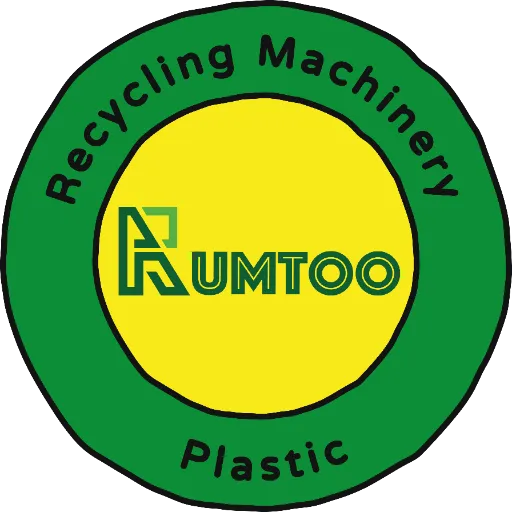Introduction
Plastic recycling has become a cornerstone of modern waste management, driving both environmental protection and economic benefits. At the heart of this process is the humble yet powerful plastic granulator. This article delves into the intricacies of plastic granulators, exploring their types, functionalities, and the pivotal role they play in transforming plastic waste into reusable material.
What is a Plastic Granulator?
In essence, a plastic granulator is a machine designed to cut plastic waste into small, uniform pieces known as flakes. These flakes can then be further processed or repurposed, playing a crucial role in the recycling chain.
Types of Plastic Granulators
Plastic granulators come in various types, each suited for specific applications.
Wet Granulator
The wet granulator integrates a waterline within its cutting chamber, which has dual benefits: partial cleaning of the plastic flakes and reduced friction and heat due to water lubrication.
Dry Granulator
Unlike wet granulators, dry granulators do not use water in the cutting process. They are suitable for dry, clean plastics but require more frequent maintenance due to higher friction and heat generation.
How Does a Plastic Granulator Work?
At the core of a plastic granulator are open rotor knives arranged in either a double-angle or v-shape array. These knives, powered by an electric motor, spin at high speeds within a cutting chamber, slicing the feedstock into fine flakes.
Benefits of Using a Plastic Granulator
Environmental Benefits
Using plastic granulators significantly reduces plastic waste by converting it into reusable material, thus minimizing landfill accumulation and environmental pollution.
Economic Benefits
By processing and repurposing plastic waste, businesses can reduce material costs, enhance sustainability, and possibly open new revenue streams through the sale of recycled plastic.
Key Features of a Plastic Granulator
Built-in Waterlines
The incorporation of waterlines in wet granulators not only cleans the flakes but also extends the lifespan of the knives by reducing wear and tear.
Adjustable Knives
Many granulators come with adjustable knives, allowing operators to dictate the size and fineness of the plastic flakes, thereby catering to different recycling needs.
Applications of Plastic Granulators
PET Bottles
One of the most common applications is the recycling of PET bottles. The granulator cuts these into uniform flakes that can be washed and further processed into new bottles or products.
Plastic Films
Granulators are also efficient in processing plastic films, reducing them into manageable flakes that can be re-melted and formed into new items.
Maintenance Tips for Plastic Granulators
Regular maintenance ensures the longevity and efficiency of a plastic granulator.
Regular Sharpening of Knives
To maintain cutting efficiency, the knives should be sharpened regularly, especially for dry granulators.
Lubrication
Proper lubrication of moving parts is crucial to minimize friction, reduce wear, and prevent overheating.
Safety Measures to Consider
Operating a plastic granulator comes with certain risks. Implementing safety measures can mitigate these risks.
Protective Gear
Operators should wear appropriate protective gear, including gloves, safety glasses, and hearing protection, to safeguard against injuries.
Noise Reduction Techniques
Granulators can be very noisy, so installing soundproofing casings and using ear protection can help mitigate noise levels.
Common Problems and Troubleshooting
Over time, granulators might face operational hiccups like overheating or jamming.
Overheating Issues
Overheating is often due to inadequate lubrication or extended operation. Regular maintenance and periodic breaks can help avoid this issue.
Jamming Problems
Jamming may occur from feeding inappropriate sizes or types of plastic. Ensuring the plastic feedstock is suitable for the granulator can prevent this.
Future Trends in Plastic Granulation
With advancements in technology and growing environmental concerns, the landscape of plastic granulation is evolving.
Technological Advancements
Emerging technologies focus on improving efficiency, increasing capacity, and reducing energy consumption in plastic granulators.
Sustainable Practices
Sustainability is becoming a cornerstone in the development of new granulators, with manufacturers integrating eco-friendly practices and materials.
Comparing Different Models
When choosing a plastic granulator, comparing different models helps in making an informed decision.
Model Specifications
Different models come with varying specifications concerning capacity, power consumption, and cutting mechanisms.
Cost vs. Performance
Balancing cost with performance is essential, as higher-priced models often offer better durability and efficiency.
How to Choose the Right Plastic Granulator
Selecting the right granulator involves considering several factors.
Factors to Consider
Efficiency, capacity, type of plastic to be processed, and maintenance requirements are crucial factors to consider while choosing a granulator.
FAQ
- What is a plastic granulator used for?
A plastic granulator is used for cutting plastic waste into small, uniform flakes for recycling. - How does a wet granulator differ from a dry granulator?
A wet granulator uses a waterline in the cutting process, whereas a dry granulator does not, making the wet granulator cleaner and more efficient in reducing wear and tear. - What kind of plastics can be processed by a plastic granulator?
Plastic granulators can process various plastics, including PET bottles and plastic films. - How can I maintain my plastic granulator?
Regular sharpening of knives and proper lubrication are key maintenance practices for a plastic granulator. - Are plastic granulators noisy?
Yes, plastic granulators can be noisy. Using soundproofing measures and ear protection can help manage noise levels. - What advances are expected in plastic granulation technology?
Future advancements may include improved efficiency, higher capacities, and sustainable materials and practices.
Conclusion
A plastic granulator is an indispensable tool in the recycling industry, offering substantial environmental and economic benefits. By understanding its functionalities, applications, and maintenance needs, businesses can optimize their recycling processes and contribute to a more sustainable future.
